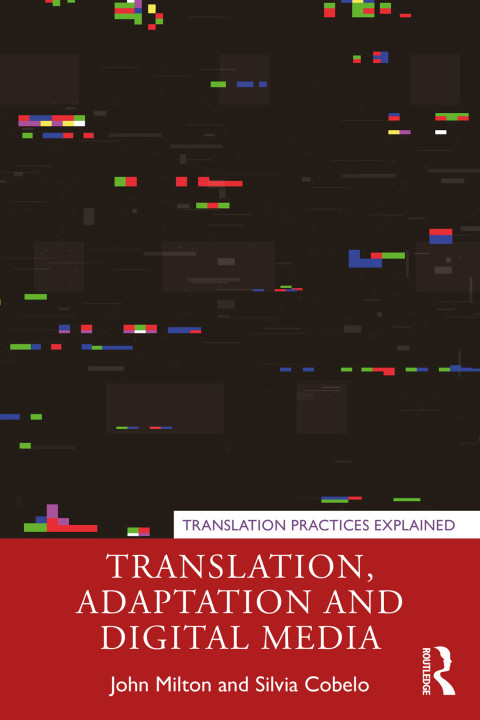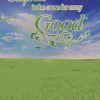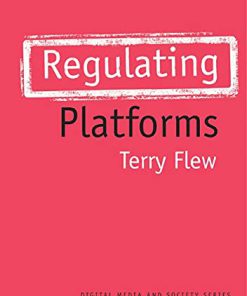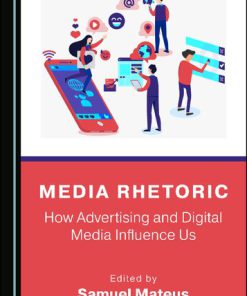Translation Adaptation and Digital Media 1st Edition by John Milton, Silvia Cobelo 0429557108 9780429557101
$50.00 Original price was: $50.00.$25.00Current price is: $25.00.
Translation Adaptation and Digital Media 1st Edition by John Milton, Silvia Cobelo – Ebook PDF Instant Download/Delivery: 0429557108, 9780429557101
Full download Translation Adaptation and Digital Media 1st Edition after payment

Product details:
ISBN 10: 0429557108
ISBN 13: 9780429557101
Author: John Milton; Silvia Cobelo
Adaptation has always been central to Translation Studies, and, as print media becomes less and less dominant, and new media become central to communication, Adaptation is more than ever a vital area of Translation and Translation Studies. In addition, links to new digital media are examined. This is the only user-friendly textbook covering the full area of Translation, Adaptation, and Digital Media applicable to any language combination. Divided into nine chapters, it includes a wide range of texts from Brazilian culture, ensuring an ex-centric view of translation. Each chapter contains an expository section, case studies, and student activities to support learning. It emphasises the central role of Adaptation in the translation of works for the popular book market, for theatre, cinema, radio, and, especially, the new media. This is the essential textbook for students in Translation and Adaptation Studies courses and instructors and professionals working on adaptation and transmedia projects.
Translation Adaptation and Digital Media 1st Table of contents:
1 Translation Studies and Adaptation Studies
1.1 Translation Studies and Adaptation Studies – Deux Solitudes
1.2 Translation and Adaptation in the Classroom
1.3 Adaptation in Translation Studies
1.3.1 Back to Dryden: Imitations
1.3.2 Equivalence
1.3.3 Tradaptation
1.3.4 The Broadening of Translation Studies
1.3.5 Boundaries
1.4 Intermedia and the Prison-House of Adaptation Studies
1.5 Trois Solitudes: Translation Studies, Adaptation Studies, and Transmedia Studies
1.6 Let a Thousand Flowers Bloom!
1.7 Suggested Activities
1.8 Suggested Reading
References
2 ‘A Country Is Made by Translators and Adaptors’: The Retellings of José Bento Monteiro Lobato (1882–1948)
2.1 Introduction
2.1.1 Lobato, the Publisher
2.1.2 The Bestselling Author of Children’s Literature
2.1.3 Lobato and the Brazilian Literary System
2.1.4 Lobato Goes to New York… and Keeps On Writing
2.1.5 Broken but Not Defeated: Lobato Writes More Children’s Books and Contemporary Translations
2.2 Lobato’s Adaptations
2.2.1 Peter Pan (1930)
2.2.2 As Aventuras Hans Staden (1927)
2.2.3 D. Quixote das Crianças (1936)
2.2.4 Fábulas (1921)
2.3 Lobato Persona Non Grata
2.3.1 Lobato and the Catholic Church – Peter Pan Burnt and Banned
2.3.2 Lobato’s Relationship with Vargas and his Time in Prison
2.4 Adaptations and Transmedia Products
2.4.1 Intersemiotic Adaptations – Lobato’s Stories in Other Media
2.4.2 Lobato Today
2.5 Suggested Activities
2.6 Suggested Reading
References
3 Transmedia: A Participatory and Convergent World
3.1 Introduction
3.2 Adaptation and Digital Media
3.2.1 Fan Studies: The Power of the Audience
3.3 Transmedia and Storytelling
3.4 Intertextuality and Transmedia
3.5 Adaptation and Transmedia
3.5.1 Fan Fiction as Disruptive Texts
3.5.2 Copyright and the Giant’s Shoulders
3.5.3 Copyrights vs Parodies – two examples
3.6 Star Wars – Adapting Beyond Good and Evil
3.6.1 Sources to Create a Space Opera Saga
3.6.2 Franchise: Adaptation and Transmedia
3.6.2.1 Toys and Action Figures – Adapting Imaginary Space Fights
3.6.2.2 Comic Books
3.6.2.3 Video Game Adaptations
3.6.2.4 TV Adaptations
3.6.2.5 Adaptations from the Musical Score
3.6.3 Star Wars: A Participatory Culture
3.6.4 The Fandom Menace
3.6.5 Fan Relations Under Disney Management
3.7 Suggested Activities
3.8 Suggested Reading
YouTube
References
4 Digital Culture: The Universe in a Smartphone
4.1 Introduction
4.1.1 The Internet
4.1.1.1 The World Wide Web (R)Evolution
4.2 The Digital Revolution Turn
4.2.1 How Has the Digital Turn Changed the Translation and Adaptation Market?
4.3 Electronic Literature (E-Lit)
4.3.1 E-Lit Before the Internet
4.3.2 Collaborative and Interactive Fiction (IF)
4.3.2.1 Twine and IF
4.3.2.2 Visual Novels and Chat Novels
4.4 Online Writing Platforms
4.4.1 The Change in the Publishing and Entertainment Industry
4.4.2 China was First
4.4.3 Wattpad and the Adaptation Success Tool
4.5 Apps for Reading and Education
4.6 Literature Adapted for Contemporary Digital Devices
4.6.1 Email Novels
4.6.2 Blooks: Blogs-to-Books
4.6.3 Cell/Mobile Phone Novels: Text-message and Chat Fiction
4.6.4 Twitter Fiction
4.6.5 Instagram
4.7 To Be Released…
4.8 Suggested Activities
4.9 Suggested Reading
YouTube
Bibliography
5 The Many Men of La Mancha: Translations and Adaptations of Don Quixote
5.1 The Famous History of the Knight Don Quijote de la Mancha
5.1.1 Pseudotranslation, Quixote and Arabic tales
5.2 Avellaneda’s Sequel: a Discussion on Imitation
5.2.1 Appropriating the Imitation
5.3 Classics, the Eternal Return
5.4 More than Four Centuries of Readings and Rewritings
5.4.1 Early Rewritings
5.4.1.1 The English and French Translations
5.4.2 The Firsts Dramatisations
5.5 Don Quixote Retranslated or Adapted?
5.5.1 The Successful Belle Infidèle
5.5.2 Don Quixote Rewriters in England and Satirical Humour
5.6 Children’s Adaptations
5.6.1 Early English and French Adaptations
5.7 Commemorations and Brazilian Rewritings
5.7.1 Very Brazilian Adaptations and Appropriations
5.7.1.1 Cordel
5.7.1.2 Brazilian Carnival
5.8 Cervantes in Translation/Adaptation Studies
5.9 Suggested Activities
5.10 Suggested Reading
YouTube
References
6 “To fit in the mouth of the actor”: Translation and Adaptation in the Theatre
6.1 Introduction – Translate or Adapt?
6.1.1 Characteristics and Types of Theatre Translation
6.1.2 Intellectual Properties
6.2 Translating for the Audience
6.2.1 Dramatists and Translations – Some Examples
6.3 The Translator as Tailor
6.4 The Theatre’s Many Actors
6.4.1 Actor Network Theory (ANT)
6.5 Making the Setting Familiar
6.5.1 Translating Dialects
6.6 Adaptations Forbidden: The Case of Samuel Beckett
6.7 Back to Shakespeare
6.7.1 Adaptation and Appropriation
6.8 The Theatre and Digital Media
6.8.1 The Advantages of Zoom Theatre
6.9 Suggested Activities
6.10 Suggested Reading
References
7 “Nothing the Ear Could Not See”: Adapting for Radio and Audio
7.1 Introduction
7.1.1 The ‘Blind’ Medium
7.1.1.1 Features of Radio
7.1.2 The Importance of Sound
7.1.2.1 The Important Role of Sound
7.2 The BBC
7.3 In the US
7.3.1 Orson Welles
7.3.1.1 War of the Worlds
7.4 Other Successes
7.5 Audio Today
7.5.1 Podcasts
7.6 Suggested Activities
7.7 Suggested Reading
YouTube
References
8 Screen Adaptations: Translating Words into Images and Sounds
8.1 Part I – Film and Television
8.1.1 Introduction
8.1.1.1 There is Always a Screenplay …
8.1.2 The Adaptation Industry
8.1.2.1 The Beginnings
8.1.2.2 News, Historical Personages/Facts, and Adaptation
8.1.2.3 Queer Adaptation
8.1.3 Adapting the Canon
8.1.3.1 Orlandos
8.1.3.2 Alice and Age Identity
8.1.3.3 Jane Austen Rewritings
8.1.4 The Movie Business
8.1.4.1 And the Oscar Goes to …
8.1.4.2 Multilingualism and Audiovisual Translation (AVT)
8.1.4.3 Major Changes in the Industry
8.1.5 Remakes
8.1.5.1 Introduction
8.1.5.2 Recent Remakes
8.1.5.3 A Different Categorisation
8.2 Part II – Streaming and Social Media
8.2.1 Introduction: TV or Not-TV?
8.2.2 Media Transnationalisation: Fiction/Non-Fiction Formats
8.2.2.1 Audiovisual Translation – AVT
8.2.3 The Streaming Business
8.2.3.1 Netflix: A Successful Case
8.2.4 Social Media Screens
8.2.4.1 YouTube
8.2.4.2 Tweeter Adaptations
8.2.4.3 Snapchat Originals – Cut to the Chase!
8.2.4.4 Facebook Watch
8.2.4.5 Instagram, TikTok, and Kwai: the New Players
8.2.5 “Future is Now”
8.3 Suggested Activities
8.4 Suggested Reading
References
9 Video Games: The Fictional Feedback Loop
9.1 Introduction
9.2 Adaptation Sources and Video Games – A Little History
9.2.1 Video Games and Films/TV
9.2.1.1 Movie-to-Game Adaptations
9.2.1.2 Game-to-Movie Adaptation
9.2.2 Video Game and Comics
9.2.2.1 Comic-to-Game adaptations
9.2.2.2 Game-to-Comic Adaptations
9.3 Video Games and Literature
9.3.1 Book-to-Game Adaptations
9.3.1.1 Adapting the Canon
9.3.1.2 Game-to-Book Adaptations
9.4 Localisation: When Translation Meets Adaptation
9.4.1 Why ‘Localisation’? Origin of the Term and Definition
9.4.2 Localisation and Translation Studies
9.4.2.1 Video Game Localisation Challenges
9.4.3 Video Game Subtitling
9.4.4 Localising with Creativity
9.4.5 Sensitive Texts
9.5 Other Kinds of Video Game Adaptation
9.5.1 Porting
9.5.2 Modding
9.5.3 Real-life Simulations
9.6 Final Considerations
9.7 Suggested Activities
9.8 Suggested Reading
References
Video Games
Index
People also search for Translation Adaptation and Digital Media 1st :
translation adaptation and digital media
media translation pdf
adaptation translation
digital media and translation
Tags:
John Milton,Silvia Cobelo,Translation Adaptation
You may also like…
Arts - Techniques
Regulating Platforms Digital Media and Society 1st Edition Terry Flew
Linguistics - Linguistics
Digital Research Methods for Translation Studies by Julie Mcdonough Dolmaya 9781003822035 1003822037











